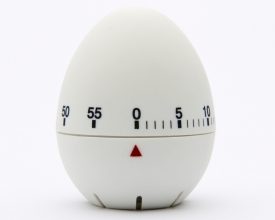The people of vacature.com have published a list with four original ways to shorten meetings. After all, there is nothing worse than a never-ending meeting, especially if it is boring and not very productive.
If this is the case one can usually do little more than count down the minutes... Or not? During meetings every participant wants to impose his/her ideas. You then run the risk of getting stuck in endless discussions, allowing emotions to run high or the debate to stagnate. What can you do to avoid the meeting becoming boring or too tense? Digitaleo, a French company that deals with mobile marketing, have introduced some simple techniques to increase the efficiency of meetings. Here are four examples.
1. The minute minder
In a meeting with many participants there is the risk that some subjects may only concern a small part of the participants and therefore is considered a waste of time for the others. To avoid this you can tour the table before the start of the meeting to determine how much time should be allocated to each subject. You can then use a chronometer or a minute minder to keep an eye on this. If the subject has not been finalized when the time has passed you can do a quick tour of the table to assess whether the subject requires extra time or whether it will be discussed further at a later meeting.
2. The moo box
Some people find it difficult to stick to the subject. Is one of your colleagues working on a lengthy explanation which no one is interested in? Then it is time to get out the 'moo box'. This is a tin box which, when you turn it over, makes a mooing sound like a cow . For those who prefer a more modern approach: these days there are also apps that make the same sound with one press of the touch screen. Take note: the moo box must be within reach of everyone, so that both the director and the intern can use it. Is this not a little inconsiderate? Not really. At least not if the rules are clear and no one is overly sensitive. The purpose is after all not to insult people, but rather to make progress.
3. The talking stick
A return to kindergarten? A speaking stick might seem a little childish, but it has the advantage that your meeting will continue smoothly. The principle is simple: point out the 'speaking stick' (not a too ridiculous object) in advance. Only the person holding the object is entitled to speak. This method avoids everyone from speaking at the same time and imposing their own ideas.
4. The ROTI-technique
The letters ROTI represent 'return on time invested'. The purpose is to quickly and easily assess the efficiency of a meeting. At the end of the gathering have each of the participants raise their hand and give the meeting points from 1 to 5. 1 implies that it was a loss of time and 5 implies that the meeting was more productive than anticipated. These scores can then be used to decide whether or not to take a different approach at the following meeting.





